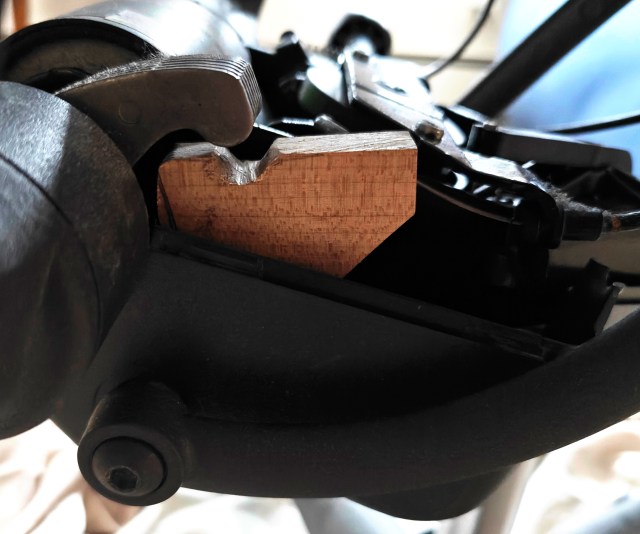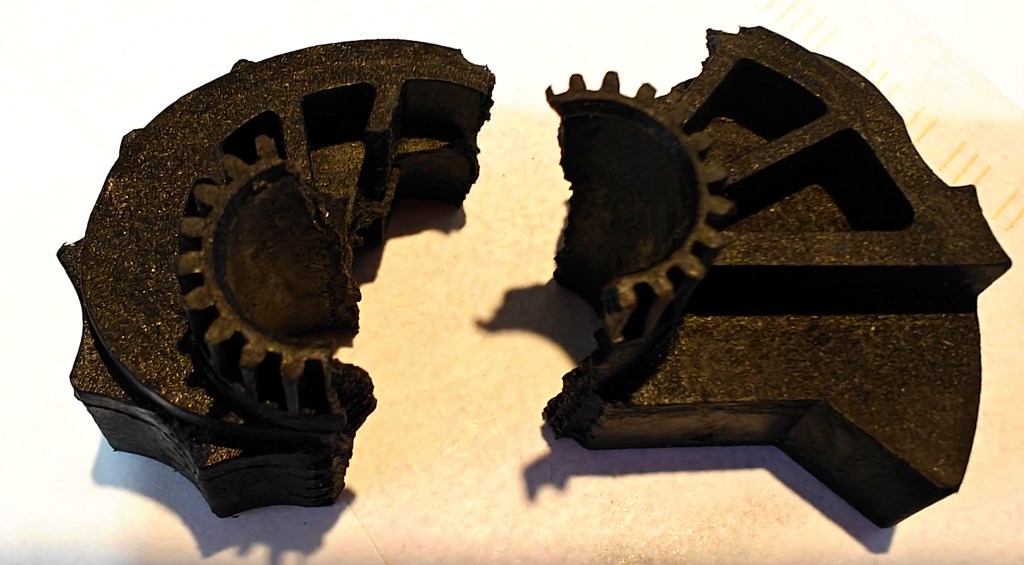
Last year we got the teenager a computer chair that was supposed to last a long time, in place of the computer chairs he destroyed about once a year by leaning back or swiveling around or rolling back and forth or just sitting in. Reconditioned, because those things are not cheap.
Last night, about a year and two weeks after the thing arrived (so don’t even imagine the possibility of a warranty) crack! and it was leaning back permanently. Um.
Turns out that the leaning function is controlled by a cam, which is rotated by a gear that is tied to a flexible shaft that goes to the lever on the side of the chair. Push the lever one direction, the cam rotates to block the lean-back mechanism, push it the other direction, the cam rotates out of the way. Oh, yeah, and the cam has a bunch of intermediate positions that I think are so it can fit lots of diffent chair models, just by rotating to a different angle.
But that cam is supposed to be in one piece.

Score another one for the teenager.
There are a lot of places on the net that sell the flexible shat, lever and gear that turn the shaft, but I could only find one that sells the cam. And this is, of course, the perfect season for getting things shipped rapidly.
So I asked the kid if he actually reclines in this chair. No, he just leans back a bit sometimes, and expects the chair to stop him from leaning back further. Forget about fancy 3D printing or laser cutting, all I need is something with the right diameter to get in the way of the leaning-back mechanism all the time. (Oh, but it can’t actually be a round piece because you would have to take the whole damn chair apart to fit it on its shaft.) Random blocks of wood in the shop? Check. Close-enough drill bit? Check. Clamp to hold small block while drilling and sawing into shape? Close enough.

I don’t know how long this bodge will last, and most likely we’ll ditch it whenever the real thing finally arrives, assuming I don’t have to disassemble the whole chair to get that in place. But for the moment, it’s way better than nothing.




